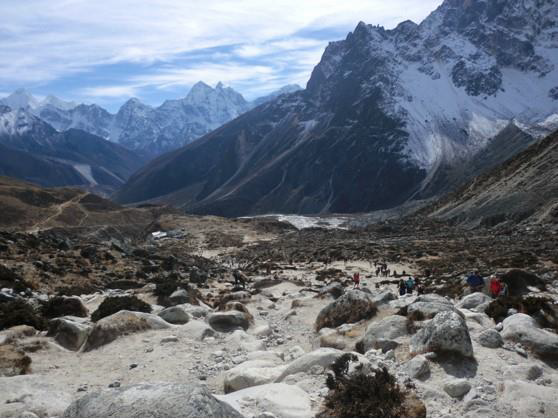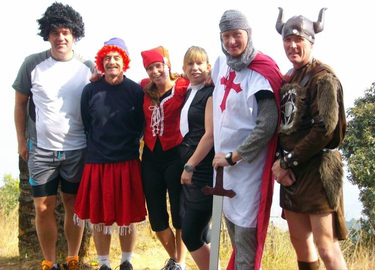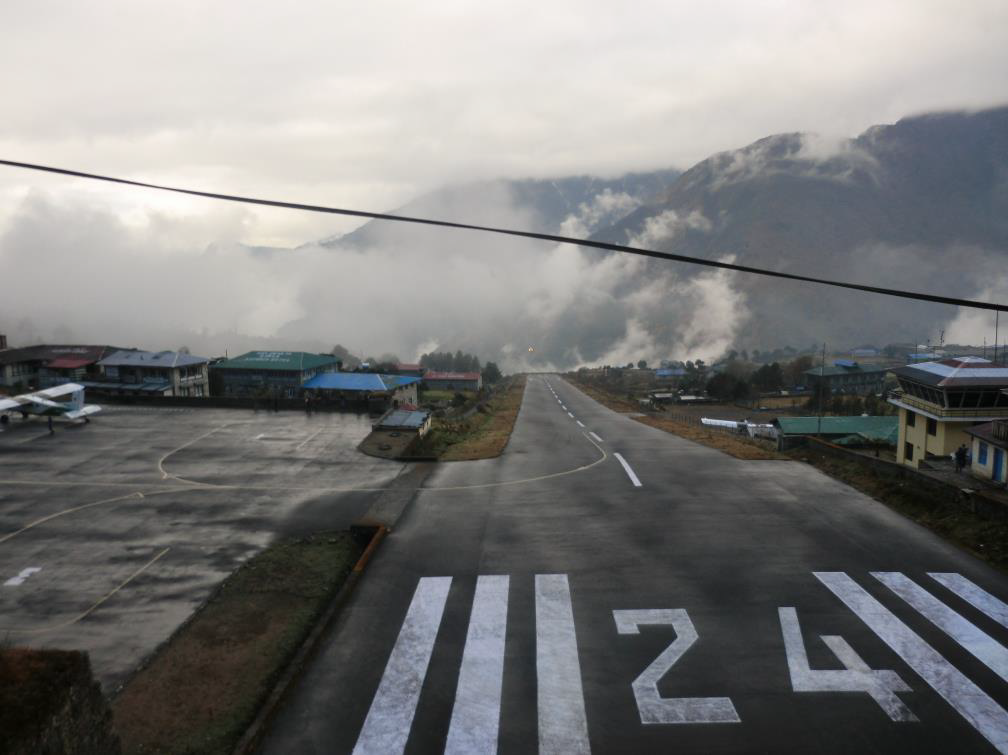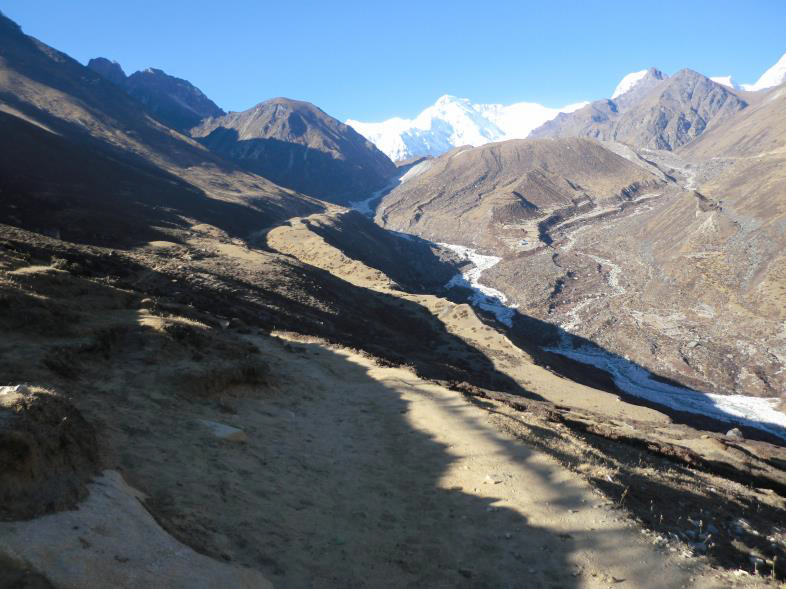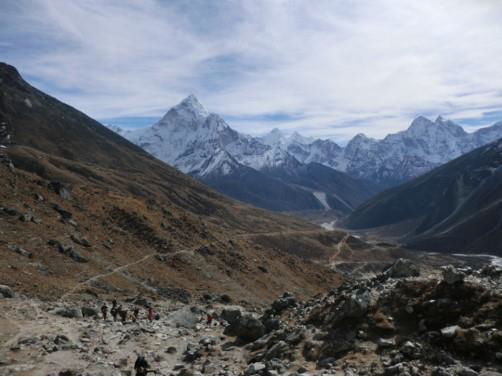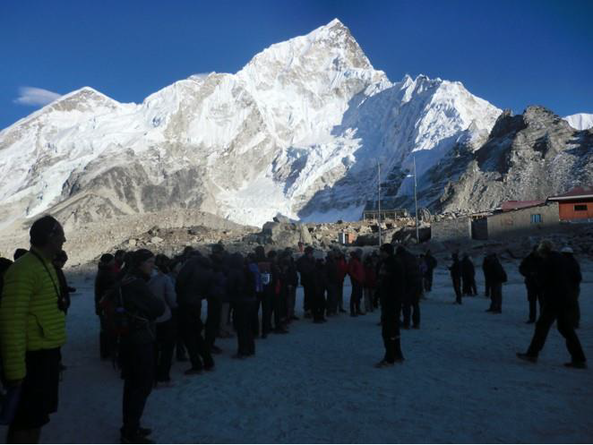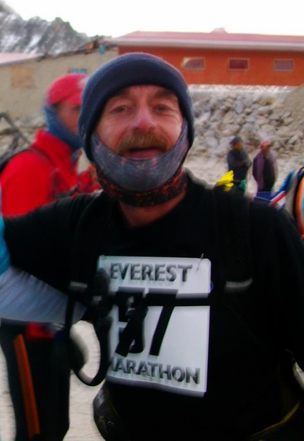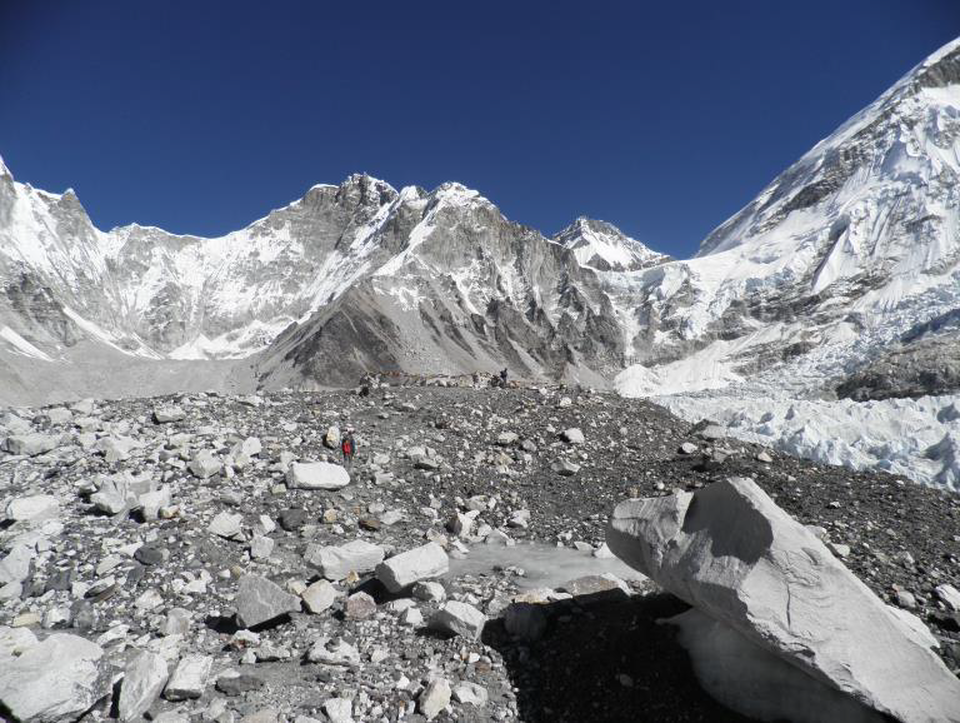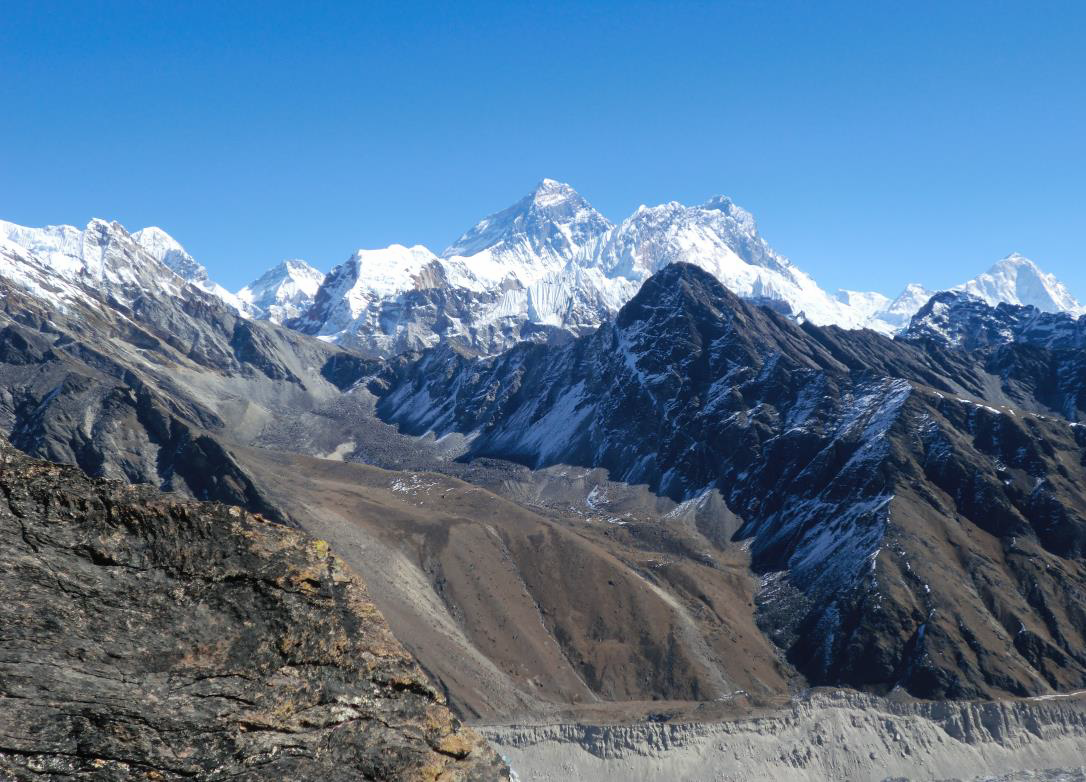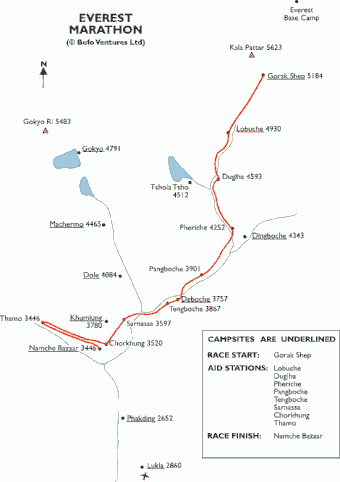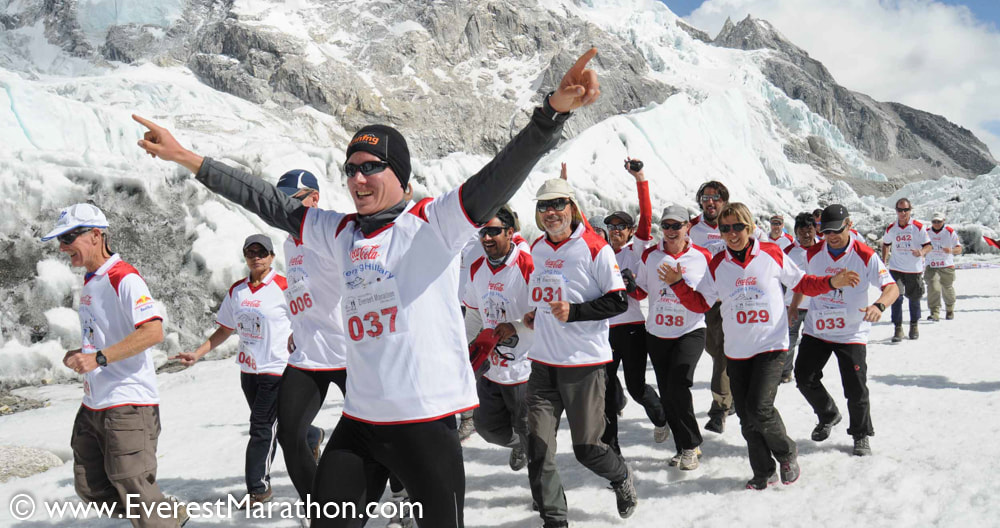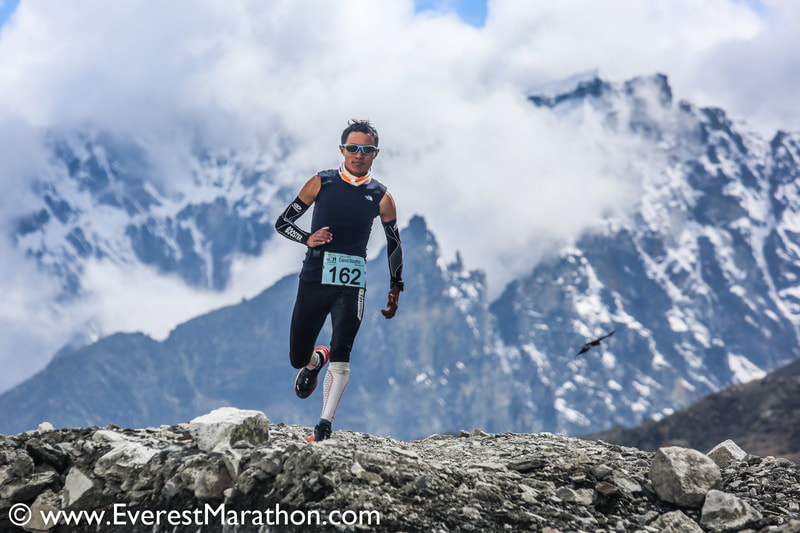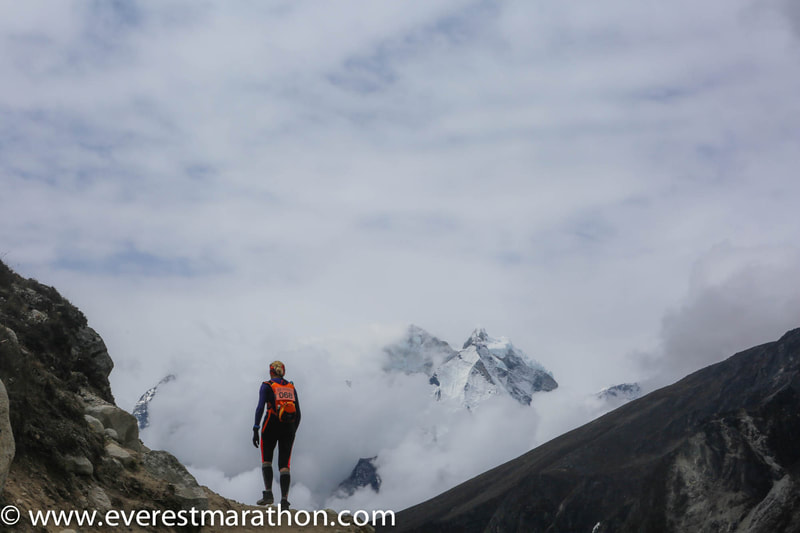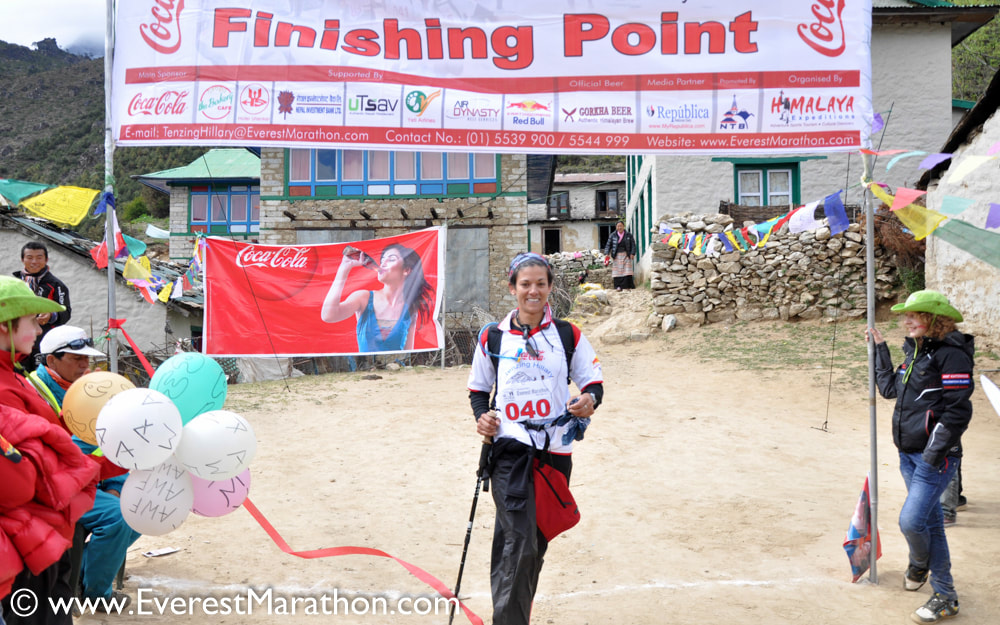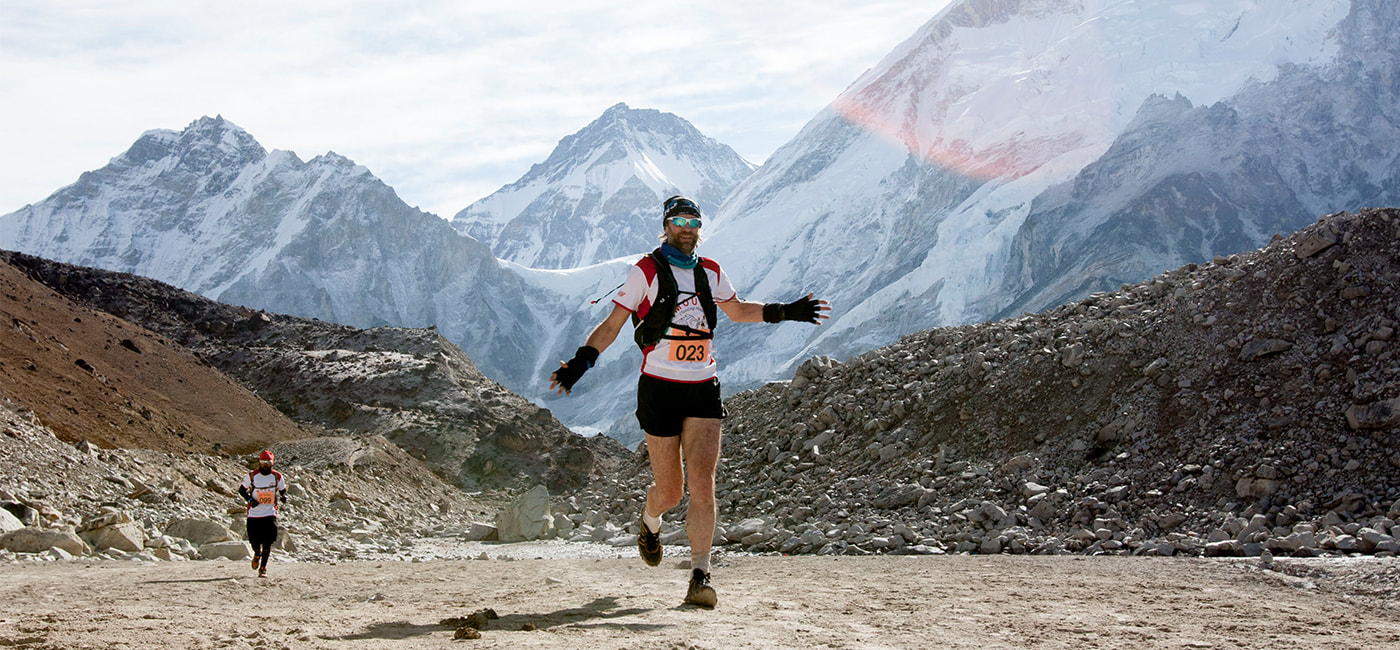Everest Marathon – Kevin Thorpe 50
Race Date: May 29th Results: 2011
|
The Highest Marathon in the World
This was to be the 14th running of the “Highest Marathon in the World” as listed in the Guinness Book of World Records. The race would see competitors from around the world attempt to complete the 42.2km route from Gorak Shep (5184m) to Namche Bazaar (3446m). Throughout the year training followed a progressive, and strict, programme. By the middle of October distances had reached a peak of 120 - 140km per week around the hills of Kathmandu. This culminated in a final trail run of over 5 hours from Kathmandu to Nagarkot and back, around 45km with an accumulative height gain of well over 1400m. |
Travelling to Lukla
|
On 15 November we met the international runners at the Shanker Hotel in Kathmandu, were issued our race “goodie” bag and given pre-race medicals. Wednesday would see us all gather again for a fun run in Nagarjun Forest, an 11km race over a forest track in fancy dress….this certainly put the training to the test.
Thursday 17th should have seen us leave Kathmandu to fly to Lukla Airport (The Most Dangerous Airport in the World?), there had been no flights to Lukla for 5 days due to bad weather, Thursday made it 6 in a row and the forecast for Friday was not much better. We were told to be prepared to move at 1030 hrs. |
|
A couple of the team decided to use the extra day in Kathmandu for a short training run and took in a 13km run before breakfast. Bags were ready and we waited for the call, the skies were still very grey!
Then suddenly a call came, be ready in 10 minutes, we are going now. A final dash to the canteen for Momos and Samosas and we were off. Swiftly across town and to the airport, the movement staff whisked our hold luggage away and asked us to “take a seat” and wait for the call. One hour passed, then another, would we be disappointed again, then just as suddenly we were marched through the airport and boarded the flight, arriving in Lukla shortly after midday. We had at last made the start point of the trek. |
Trekking to the Start Line
|
The trek to the start line would take two weeks, this was to ensure that our bodies were adequately acclimatised to run at over 5000m above sea level.
Accommodation for the first 3 and last 3 days would be in lodges, the other 10 days would be spent under canvas with night time temperatures expected to drop to around -15 degrees c. Would the RAB bags and jackets be up to the job? Fortunately, the weather was unseasonably warm and rarely fell below minus 10! During the day with the sun out it gave the feeling 20 degrees. |
|
There were many fantastic moments on the trek, the views on each day were stunning, the climb by some of the team to the top of Gokyo Ri (5460m) and Kalapatar (5660m) and a visit to Everest Base Camp were undoubtedly the highlights.
Each day got progressively harder both physically and mentally, as oxygen levels lowered we questioned our sanity and reasoning for taking on such a challenge, but after more cups of ginger and lemon tea, a few biscuits and a look around to see that others were suffering just as bad, or possibly even worse we knew we would not give in before the start line. Altitude sickness was prevalent across the group with some suffering more than others. An excellent medical team ensured we were all well cared for and any early signs of pulmonary (HAPE) or cerebral (HACE) edema were quickly identified and remediated. |
We arrived in Gorak Shep (5184m) the afternoon before the race having had final medicals in Lobuche.
A prerace rehearsal was held just as the sun went down and the temperature dropped about 25 degrees within 5 minutes.
What would it be like at 0615hrs in the morning as we waited for the start?
Another check of the race kit and a final meal was had in the lodge and prerace nerves started, loss of appetite, numerous visits to the bathroom and an increase case of insomnia would follow.
Then a wake-up call at 0500 hrs, an attempt to eat some porridge and then outside into the cold. Down jackets were quickly cast aside as we called out our race numbers and waited for the starter to blow his whistle and send us on our way.
Running a marathon at 5 k above sea level, without tapering… what could go wrong?
A prerace rehearsal was held just as the sun went down and the temperature dropped about 25 degrees within 5 minutes.
What would it be like at 0615hrs in the morning as we waited for the start?
Another check of the race kit and a final meal was had in the lodge and prerace nerves started, loss of appetite, numerous visits to the bathroom and an increase case of insomnia would follow.
Then a wake-up call at 0500 hrs, an attempt to eat some porridge and then outside into the cold. Down jackets were quickly cast aside as we called out our race numbers and waited for the starter to blow his whistle and send us on our way.
Running a marathon at 5 k above sea level, without tapering… what could go wrong?
Race Day
The first 500m is across a sand basin followed by a scramble across a boulder field for 3km, surely no one would be running, but as we looked ahead there were numerous Sherpa athletes disappearing into the distance,
I tried running and got about 100 metres before being completely breathless and resorted to a steady jog.
Each runner had their own race plan, either privately or shared. We knew where we wanted to be at each checkpoint and what time we hoped to finish.
The elite Sherpa runners would be ignored and it would be man (or woman) against the course.
The course undulated and meandered through six or seven checkpoints and feeding stations towards Namche Bazaar gradually losing height, although we recall little increase in oxygen levels.
I tried running and got about 100 metres before being completely breathless and resorted to a steady jog.
Each runner had their own race plan, either privately or shared. We knew where we wanted to be at each checkpoint and what time we hoped to finish.
The elite Sherpa runners would be ignored and it would be man (or woman) against the course.
The course undulated and meandered through six or seven checkpoints and feeding stations towards Namche Bazaar gradually losing height, although we recall little increase in oxygen levels.
The belief that conditions would improve as we descended never became reality as fatigue balanced the “easier” terrain.
Masses of encouragement was given as we passed trekkers heading north, checkpoint marshals gave out energy bars and fluids, although these were often returned with interest after a very few steps!
The route was not marked so runners had to be constantly aware of their surroundings in order to stay on course. A missed checkpoint would mean disqualification at best and potentially more serious consequences if one got completely lost in the barren wilderness.
At the 32km point we approached Namche Bazaar, this entailed the dreaded Thame “loop”, a 10km hilly route before returning to the finish line in the village centre.
Masses of encouragement was given as we passed trekkers heading north, checkpoint marshals gave out energy bars and fluids, although these were often returned with interest after a very few steps!
The route was not marked so runners had to be constantly aware of their surroundings in order to stay on course. A missed checkpoint would mean disqualification at best and potentially more serious consequences if one got completely lost in the barren wilderness.
At the 32km point we approached Namche Bazaar, this entailed the dreaded Thame “loop”, a 10km hilly route before returning to the finish line in the village centre.
|
Distance |
Time |
Alt Loss |
Alt Gain |
Altitude |
Notes |
|
10 km |
1:26 |
900 |
120 |
4400 |
Tried to get into a steady rhythm and not use too much energy in the first hour |
|
20 km |
2:50 |
700 |
150 |
3750 |
Concentrated on maintaining fluid and food levels. Couldn’t get enough energy in….. |
|
30 km |
4:30 |
820 |
700 |
3600 |
Started to feel the effects of the exertion of the two weeks trek. Tried to run the flat and downhill where possible |
|
40 km |
6:15 |
400 |
380 |
3500 |
Only 12 km to go, a feeling of “I’ve got this far” One final push. |
|
Finish |
6:30 |
120 |
40 |
3450 |
How far can 1 k really be? |
Some notable moments from the race. Spectacular views at every corner, tiredness beyond anything else imaginable. Euphoria as the finish line approached. Completing the course with only a few bruises following the odd fall in a respectable and pleasing time of six and half hours.
The “winner” was home in just under 4 hours.
The “winner” was home in just under 4 hours.
Post MortemThe day after the race we had to complete a six-hour trek back to Lukla to catch the flight back to Kathmandu.
Was I prepared? This was my third time in the event and probably yes…but it was always going to be a tough one. Would I do it again….. Probably……. http://everestmarathon.com |
